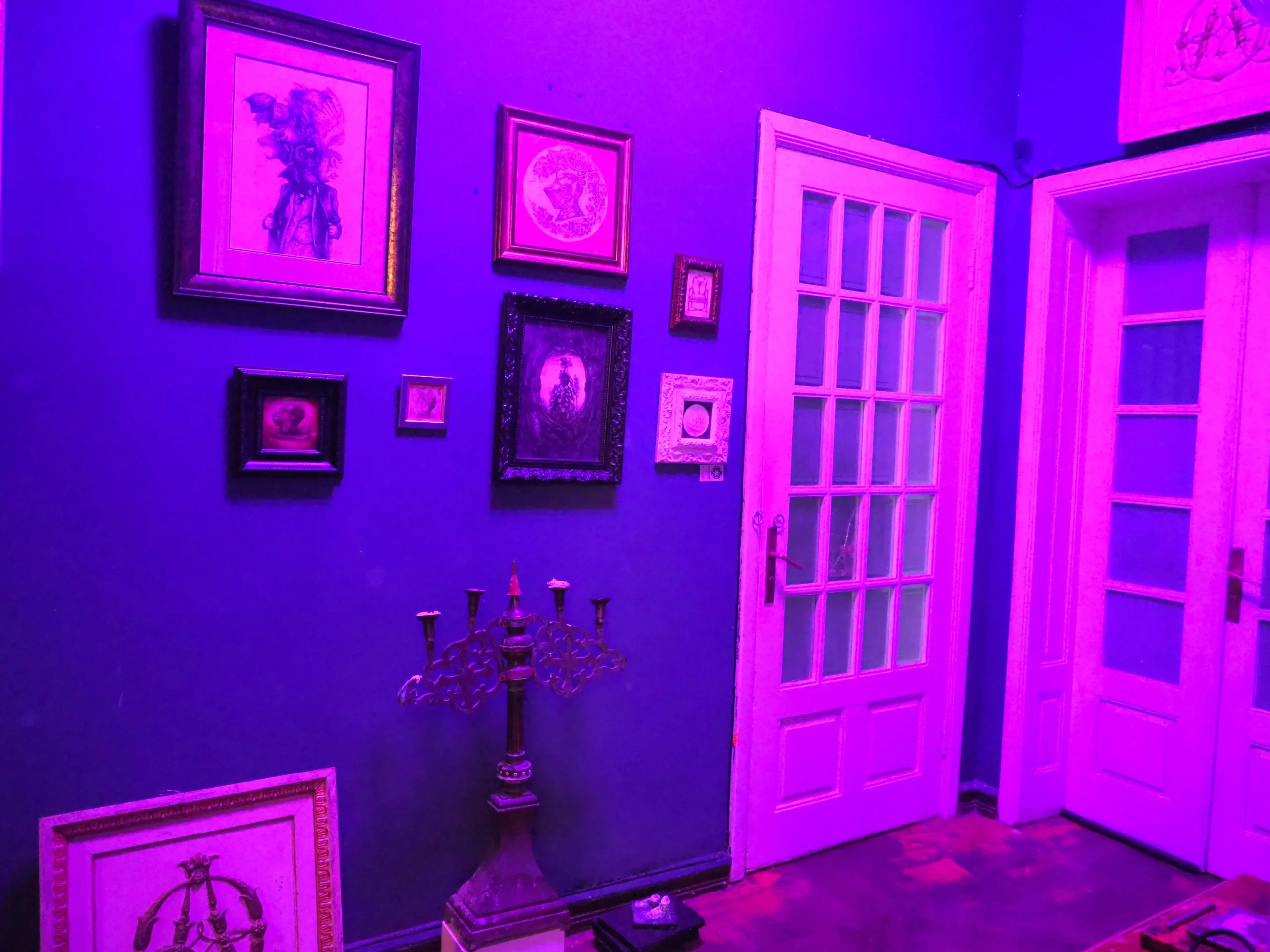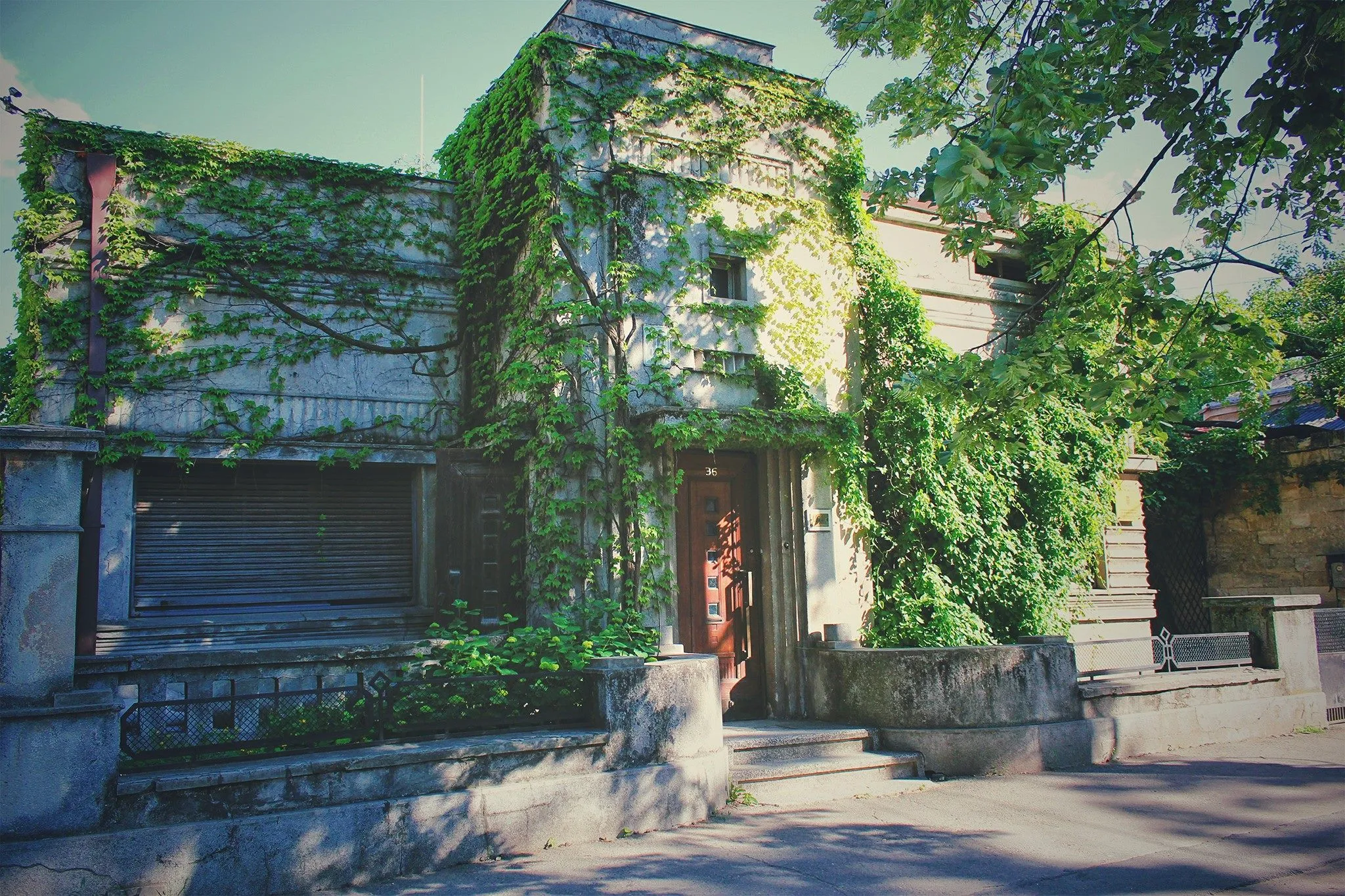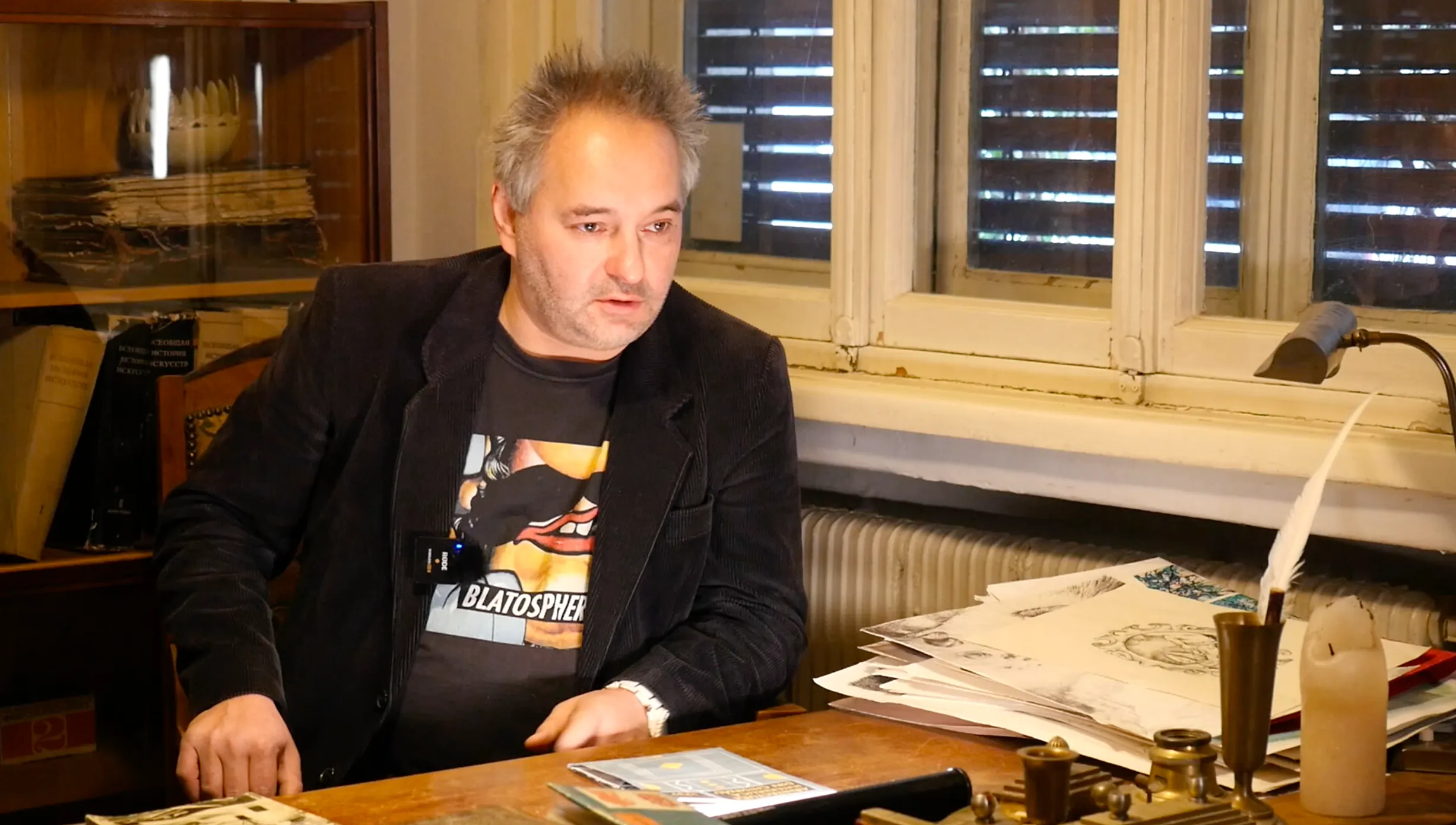An urban house at the heart of Chisinau is creating a community of artists, attracting passers-by. A year ago, Moldovan artist Yurii Palcov wandered near the urban villa on Mihai Eminescu Street and wanted to step in. “The door was open, and several people were inside,” he remembers. An artist with Russian and Moldovan roots looks for the right words: “I loved the atmosphere, the energy there!” Almost every room in the same house is now covered with Palcov’s drawings. “They are everywhere — even in the bathroom! This is my exposition,” he says with pride.

Palcov has drawn since he was three years old. It means everything to him.
Palcov has drawn since he was three years old. It means everything to him.
His art can be satirical or, for example, trying to find a balance between the brain and heart. The road there is messy, even bloody — as we notice from the paintings.
In this serendipitous encounter with a seemingly ordinary private house, he found his new community.
Palcov isn’t the only fan. The Moldovan NGO Save Chisinau, dedicated to saving old buildings and history, chose the urban villa on Eminescu Street as one of Chisinau’s most beautiful buildings. It’s from the interwar period (1918–1939), and its style, featuring unique Art Deco elements, is rare in Chisinau but popular in Europe.
We also decide to knock on the door of this house, like Yurii Palcov once did.
“When the war started, there was no reason for me to stay in Moscow,”

Quit Moscow
A couple, Solly and Nikita Kalashnikoff, an event organizer by profession, are the two mentors of this building. They moved back from Moscow when Russia attacked Ukraine. “When the war started, there was no reason for me to stay in Moscow,” Nikita explains, adding: “Too much totalitarianism. No freedom.”
Since then, they built a community in the heart of Chisinau.
Nikita calls his home on Eminescu Street the magnetic house because it attracts people. He believes it has the power to change fates. “The house has its say,” he explains. “If you try to do something that doesn’t fit here, it fails.”
Once, there was a couple interested in older architecture. They had been chatting for a while and decided to meet in person in front of their favorite house. They both came to Eminescu Street and are now married! Nikita thinks it’s proof that his home is fate-changing.
It sure changed the fate of Nikita’s family. He was a 6-year-old boy when they moved into this house. A new home his parents didn’t build or buy. They just enged two apartments for this.
Nikita stands in the hallway with 4-meter walls and eyes an old telephone table. “Dad worked for “Moldova Film” and had contacts to get such treasures. Now we call it antique; in Soviet times, it was called crap.” The father exchanged a modern table for this beautiful old one.

A home swap
The same goes for the Khrushchyovka apartments; two artistic individuals, Nikita’s parents, Irina and Vitalie, decided to exchange for an older house.
In Soviet times, private property did not exist. Everything was government-owned. You could exchange but not buy or sell property. Kalashnikoff’s parents were also in the artist community. His mother owned an art gallery, so they probably understood the house’s uniqueness.
Nikita knows that the Bessarabian pharmacist who built the house in 1939 ordered the project from the architect Nicolae Mertz. Nikita recounts that the pharmacist went to the war during the Second World War. He doesn’t know much about the pharmacist except that his relatives now live in the US.
According to the NGO Save Chisinau, in the interwar period, the owner was attested to be Sara Sperberg. In 1940, according to the Project Historical Center of Chisinau, Rosa Spirer owned the building. Later on, during the Soviet period, Ivan Bodiul, the First Secretary of the Communist Party of the Moldavian SSR, lived there. So, this house has witnessed injustice, much like every street corner of Chisinau during the Soviet occupation.
But this is also the story of how Kalashnikoff’s family ended up here.
“When my mom had an art gallery here, we always had people coming in, having coffee, exchanging ideas,” Nikita remembers. “Similarly, with my father, many artists, actors, and other colleagues used to come here. So we still use this place as a meeting point.” He wants to offer a facility where people can meet and start collaborating. They have built a recording studio and room for musical performances for this.

Most of the community is Russian-speaking. “There are also Ukrainian refugees. We all speak the same language, and nobody cares what your blood type or nation is,” Nikita says.
This summer, they will travel around Moldova to organize a creative festival for artists, musicians, and writers. After that, they would like to travel abroad and have some influence on Moldovan culture.
Disrupting, dividing, and conquering people in this world is easy. However, fine arts and music can unite us, providing a common language to understand each other, suggests Yurii Palcov. He believes that the biggest concern for Moldovan people is the inability to realize and, of course, achieve their dreams. For Nikita, this is the inability to value oneself.

Leave a Reply